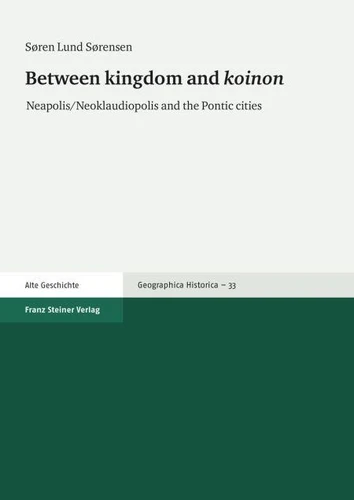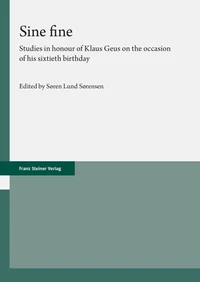Between kingdom and "koinon". Neapolis/Neoklaudiopolis and the Pontic cities
Par :Formats :
Disponible dans votre compte client Decitre ou Furet du Nord dès validation de votre commande. Le format PDF est :
- Compatible avec une lecture sur My Vivlio (smartphone, tablette, ordinateur)
- Compatible avec une lecture sur liseuses Vivlio
- Pour les liseuses autres que Vivlio, vous devez utiliser le logiciel Adobe Digital Edition. Non compatible avec la lecture sur les liseuses Kindle, Remarkable et Sony
 , qui est-ce ?
, qui est-ce ?Notre partenaire de plateforme de lecture numérique où vous retrouverez l'ensemble de vos ebooks gratuitement
Pour en savoir plus sur nos ebooks, consultez notre aide en ligne ici
- Nombre de pages224
- FormatPDF
- ISBN978-3-515-11317-5
- EAN9783515113175
- Date de parution07/07/2016
- Protection num.Digital Watermarking
- Taille3 Mo
- Infos supplémentairespdf
- ÉditeurFranz Steiner
Résumé
When, around 64 BC, the Romans drove out the last king of Pontos, they turned parts of his domains into a Roman province. The interior was, however, not ready for annexation, and a city-state culture was introduced, including the foundation of seven new cities in an area previously characterised by fortresses and temple states. This e-book surveys the development of these cities from their origins in the war-torn territories of the Pontic kingdom to the third century AD; by then they were fully incorporated in the Roman Empire.
Furthermore, it places particular emphasis on one of them, Neapolis (later Neoklaudiopolis), an important but little studied city. Not only is this the first book-length study of Neapolis, it also reassesses the many Greek and Latin inscriptions from this city and Pontos in general. Among the documents re-evaluated here is a famous imperial oath taken to the Emperor Augustus, aptly illustrating the difficult transition from a Persian-Anatolian domain to a Roman province by the means of client kings and the imperial cult.
Furthermore, it places particular emphasis on one of them, Neapolis (later Neoklaudiopolis), an important but little studied city. Not only is this the first book-length study of Neapolis, it also reassesses the many Greek and Latin inscriptions from this city and Pontos in general. Among the documents re-evaluated here is a famous imperial oath taken to the Emperor Augustus, aptly illustrating the difficult transition from a Persian-Anatolian domain to a Roman province by the means of client kings and the imperial cult.
When, around 64 BC, the Romans drove out the last king of Pontos, they turned parts of his domains into a Roman province. The interior was, however, not ready for annexation, and a city-state culture was introduced, including the foundation of seven new cities in an area previously characterised by fortresses and temple states. This e-book surveys the development of these cities from their origins in the war-torn territories of the Pontic kingdom to the third century AD; by then they were fully incorporated in the Roman Empire.
Furthermore, it places particular emphasis on one of them, Neapolis (later Neoklaudiopolis), an important but little studied city. Not only is this the first book-length study of Neapolis, it also reassesses the many Greek and Latin inscriptions from this city and Pontos in general. Among the documents re-evaluated here is a famous imperial oath taken to the Emperor Augustus, aptly illustrating the difficult transition from a Persian-Anatolian domain to a Roman province by the means of client kings and the imperial cult.
Furthermore, it places particular emphasis on one of them, Neapolis (later Neoklaudiopolis), an important but little studied city. Not only is this the first book-length study of Neapolis, it also reassesses the many Greek and Latin inscriptions from this city and Pontos in general. Among the documents re-evaluated here is a famous imperial oath taken to the Emperor Augustus, aptly illustrating the difficult transition from a Persian-Anatolian domain to a Roman province by the means of client kings and the imperial cult.




